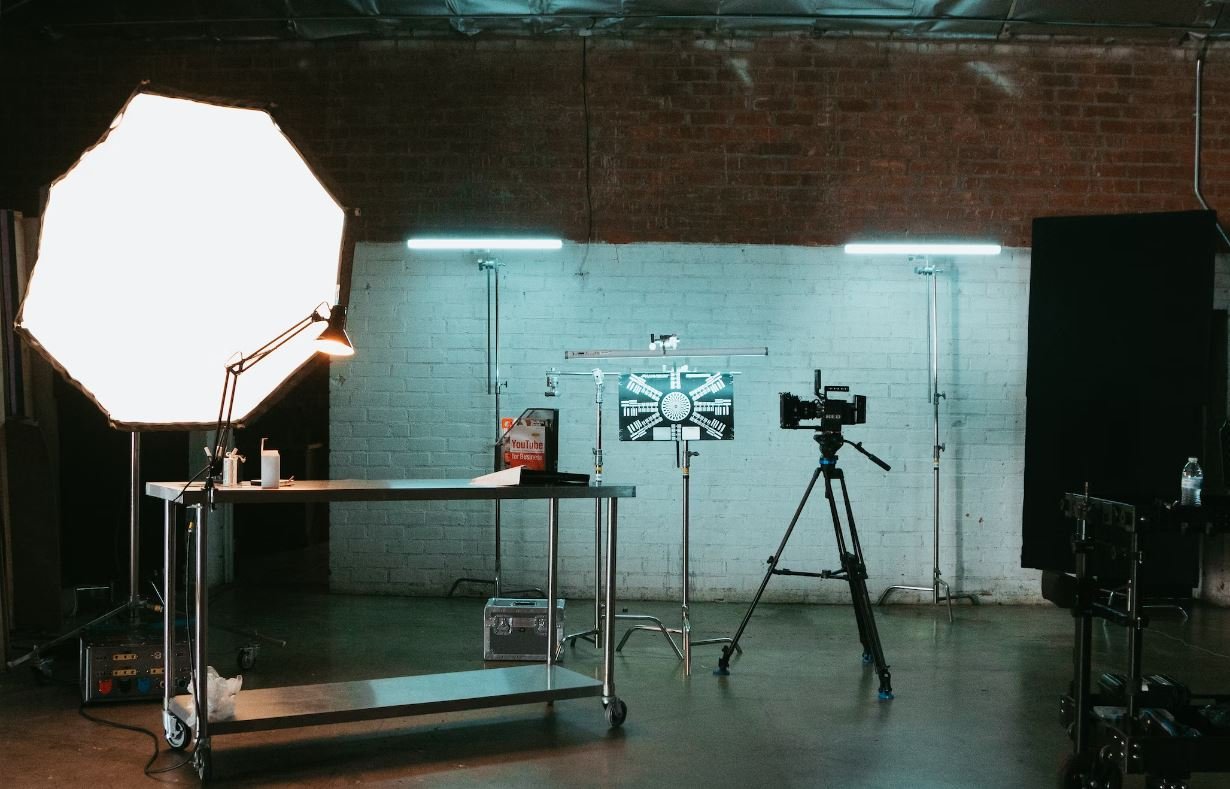What Is Picture Plane?
The picture plane is a fundamental concept in art and design, particularly in the field of drawing and painting. It refers to the imaginary surface or plane on which an artwork is created or viewed. Understanding the picture plane is essential for artists as it helps them accurately depict perspective, depth, and proportion in their work.
Key Takeaways:
- The picture plane is an imaginary surface on which artwork is created or viewed.
- It helps artists create realistic and accurate depictions of perspective, depth, and proportion.
- Understanding the picture plane is essential for creating visually appealing and balanced compositions.
**The concept of the picture plane dates back to the Italian Renaissance when artists began exploring the principles of perspective.** By dividing their canvas or paper into an imaginary flat surface, they could use mathematical calculations to accurately depict objects and scenes in a realistic manner.
**The picture plane can be thought of as a transparent window through which the artist views the subject matter.** It acts as a frame of reference and determines how the elements within the composition are arranged and organized.
| Advantages of Understanding the Picture Plane | Disadvantages of Ignoring the Picture Plane |
|---|---|
|
|
**When creating artwork, artists often use various techniques to establish a strong connection between the subject and the picture plane.** These techniques include sighting, measuring, and using grids or other aids to ensure accurate proportions and placement of objects within the composition.
Using Sighting Techniques
**Sighting is a method where artists use their own line of sight to measure and compare distances and proportions between objects in their artwork.** By holding a pencil or brush at arm’s length and using it as a measuring tool, artists can accurately determine the size and placement of objects relative to the picture plane.
Using Measuring Tools and Grids
**Measuring tools such as rulers or proportional dividers can be used to create accurate measurements and proportions in the artwork.** Additionally, using grids, whether drawn directly on the picture plane or as an overlay, can help artists maintain accurate proportions and perspectives when transferring their subject matter onto the canvas or paper.
| Perspective Techniques | Description |
|---|---|
| One-Point Perspective | Objects are drawn as if facing directly towards the viewer. |
| Two-Point Perspective | Objects are drawn at angles to create a more dynamic and realistic representation. |
| Three-Point Perspective | Objects are drawn with a strong sense of depth and three-dimensionality. |
**In conclusion, the picture plane is a crucial concept in the world of art and design.** Understanding its role and employing techniques like sighting and grid drawing can greatly enhance an artist’s ability to create realistic and visually appealing artwork with accurate proportions, perspective, and composition.

Common Misconceptions
Picture Plane
When it comes to the concept of picture plane, there are several common misconceptions that people often have. It is important to dispel these misconceptions in order to have a clearer understanding of the subject.
- The picture plane is not the same as a physical picture or photograph. It is a theoretical concept used in art and design to describe the two-dimensional surface where an artist creates an artwork.
- The picture plane is not limited to just paintings or drawings. It can also be applied to other artistic mediums such as photography, graphic design, and even digital art.
- Contrary to popular belief, the picture plane is not fixed in space or restricted to a specific size or shape. It can extend as far as the artist desires and can be manipulated to create different visual effects.
Understanding these common misconceptions will help in comprehending the true nature and versatility of the picture plane as a foundational element in art and design.

Definition of Picture Plane
The picture plane refers to the theoretical window through which an artist views their subject. It is the two-dimensional surface upon which the artist paints or draws to create the illusion of depth and perspective. Here are some interesting examples that help to explain the concept of the picture plane:
Artists and Their Preferred Picture Plane Orientation
Throughout history, different artists have experimented with various picture plane orientations to achieve different effects. Here are some notable examples:
Famous Artworks and Their Picture Plane Placement
The placement and tilting of objects within the picture plane can dramatically impact the perception of depth in a painting. Here are a few famous artworks and their unique picture plane placement:
Relation between Picture Plane and Vanishing Points
The picture plane plays a crucial role in determining the positioning of vanishing points in a perspective drawing. Here are some interesting examples:
Applications of Picture Plane in Architecture
The concept of the picture plane is not limited to the realm of visual arts; it also finds applications in architecture and design. Here are some fascinating examples:
Cultural Variations in Picture Plane Representation
Across different cultures, the representation of the picture plane can vary, showcasing unique artistic styles and perspectives. Here are some intriguing examples:
The Impact of Picture Plane on Surrealism
Surrealist artists were known for their innovative use of the picture plane to depict dreamlike and subconscious imagery. Here are some examples that demonstrate this artistic approach:
The Evolution of the Picture Plane in Modern Art
The notion of the picture plane underwent significant transformations during the modern art movement, leading to groundbreaking approaches. Here are some influential examples:
Picture Plane in Graphic Design and Digital Art
The integration of picture plane principles in digital art and graphic design has opened up new avenues for creative expression. Here are some compelling examples:
Picture Plane and the Illusion of Depth
The picture plane allows artists to create the illusion of depth in their works, making two-dimensional representations appear three-dimensional. Here are some mind-boggling examples:
Conclusion
The concept of the picture plane is a fundamental aspect of visual art that affects our perception of space and depth. Its various applications and adaptations in different art forms, architecture, and design showcase the versatility and significance of this concept. By understanding the picture plane, artists can create compelling compositions and bring their artistic visions to life.
Frequently Asked Questions
What is Picture Plane?
The picture plane refers to the two-dimensional surface upon which an image is created or represented. It can be a canvas, paper, screen, or any other medium that allows for the visualization of an image. It is the flat space where an artist or photographer constructs their composition.
Why is the picture plane important in art?
The picture plane is crucial in art because it is the foundation upon which an artist builds their visual representation. It provides a boundary and a context within which all the elements of the artwork exist. By understanding and manipulating the picture plane, artists can create depth, perspective, and visual harmony.
How does the picture plane relate to perspective?
Perspective is the technique used to create the illusion of depth and three-dimensionality on a two-dimensional surface. The picture plane plays a significant role in perspective as it serves as the reference point for vanishing points, horizon lines, and the arrangement of objects within the composition.
Can the picture plane be altered or modified?
Yes, the picture plane can be altered or modified by artists to create unique visual effects. Artists can manipulate the picture plane by distorting it, tilting it, or breaking its boundaries to convey different emotions or perspectives within their artwork.
What is the relationship between the picture plane and composition?
The picture plane and composition are closely intertwined in art. The composition refers to how various elements such as lines, shapes, colors, and textures are arranged within the picture plane. By carefully organizing these elements, artists can create balance, harmony, and visual interest within their compositions.
How does the picture plane concept apply to photography?
In photography, the picture plane refers to the flat surface of the camera film or image sensor where the captured image is projected. Photographers consider the picture plane when framing their shots, selecting focal points, and composing their images to create visually appealing and impactful photographs.
Can the picture plane differ in different art forms?
Yes, the picture plane can vary across different art forms and mediums. For example, in painting, the picture plane is typically a canvas or a piece of paper, while in sculpture, it may refer to the surface within which the sculpture exists. The principles of the picture plane may also be applied to digital art, graphic design, and other visual mediums.
Are there any famous artworks that exemplify the effective use of the picture plane?
Yes, several renowned artworks showcase the effective use of the picture plane. One notable example is Leonardo da Vinci’s “Mona Lisa,” where the careful arrangement of the figure within the picture plane creates a sense of depth and realism. Another example is Vincent van Gogh’s “Starry Night,” where the swirling brushstrokes and the placement of the various elements contribute to the overall composition within the picture plane.
How can artists use the picture plane to create a sense of depth?
Artists can employ various techniques to create a sense of depth within the picture plane. These include the use of overlapping objects, diminishing scale, atmospheric perspective, and linear perspective. By carefully manipulating these elements, artists can create the illusion of three-dimensional space within their two-dimensional artworks.
Does the picture plane concept apply to abstract art as well?
Yes, the concept of the picture plane applies to abstract art as well. Although abstract artworks may not depict recognizable objects or adhere to realistic conventions, they still exist within a two-dimensional space. Artists working in abstract styles utilize the principles of the picture plane to organize and arrange their abstract elements in visually engaging and expressive compositions.




